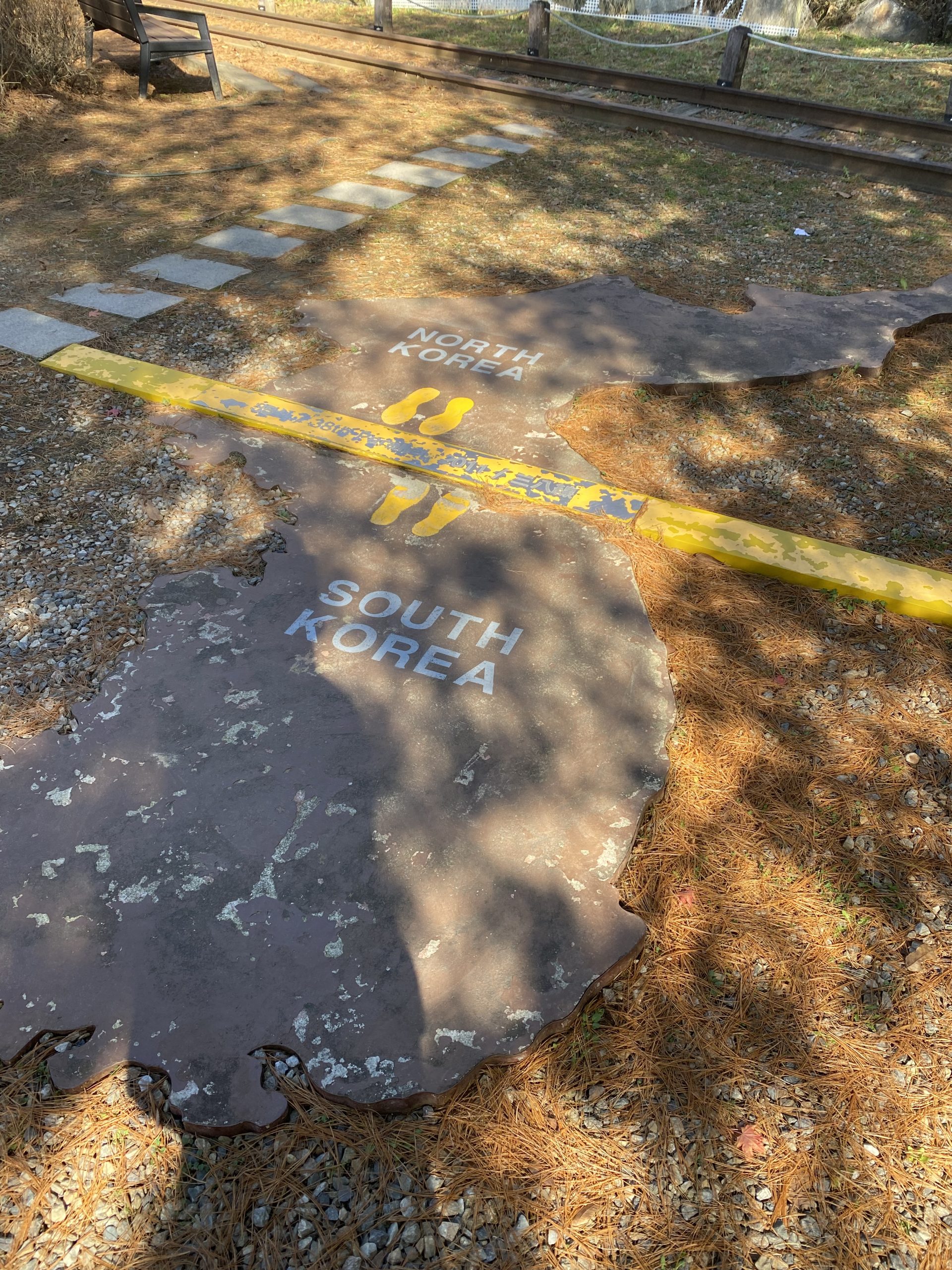The Korean DMZ: A symbol of war turned tourist destination
The DMZ in Korea is a symbol for a decades long struggle that the United States has always been involved in.
I invite you, the reader, to sit with some discomfort with me and think about the grey area between what we might have once believed to be black and white. I will not pretend to know or understand the pain and hurt that the people of Korea have endured during the last seven decades of this ghost war. Nothing I could say or elucidate will help such a complicated matter, but my hope is to inspire some compassion and empathy within my country that has grown so complacent.
Our country played a significant role in the creation of the Demilitarized Zone (DMZ) in Korea. The Korean DMZ is a physical border along the Korean peninsula across the 38th parallel, which separates and splits the country in two. It was signed into an Armistice agreement by United States Army Lieutenant General William Harrison Jr., and North Korean Leader Kim II Sung on July 27, 1953. An Armistice is essentially an agreement of cease fire. A war on hold.
A year after the Armistice was signed, during the 1954 Geneva Conference, a peace treaty was suggested to be implemented but US Secretary of State, John Foster Dulles, did not adhere to such an attempt for a treaty. 70 years to the date, and counting, the DMZ remains. What was meant to be a temporary buffer zone has become an intensely guarded frontier. As the years go by, so does what little hope is left for reunification. It has become increasingly clear, however, that unification under North Korea’s communist rule would not be Korean unity.
I went to the DMZ with my study abroad class two weeks ago to the Dora Observatory. Our tour guide, Moon, was doubtful there would ever be a solution to the conflict within her lifetime. The youngest generation that left seventy years ago (often by force), South Korea to North Korea, have all grown up now. The new generation has grown up in a world where this reality is the norm.
In the US we usually consider North and South Korea as two separate entities. It is the same shared history, the same culture, families stripped and torn apart by a line drawn in the sand, never to be seen again besides the view from a high tower.
The DMZ has become a tourist destination. I did not want to go despite a sinking morbid curiosity. It was eerie taking the bus across the Civilian Control Line, driving along a deserted highway, past an estimated 2 million landmines. When we got to the observation deck, a line of people filled the telescopes, all trying to get a peek at North Korea. White smiling faces took selfies with the North Korean flag waving in the distance. My heart sank.
I was uncomfortable because I did not feel like most visitors were acting in this setting in a serious manner. The tone of the DMZ and the smiling soldier mascots in the gift shop gave me whiplash. This, I felt, was not the place for jokes and laughter. I wanted to know what Moon thought about what the DMZ has become. The telescopes are new, put in place post-covid.
I asked her if she felt like this place has become a human zoo and her response reminded me that I am still viewing this entire experience from a White American perspective.
“It’s a little uncomfortable, a little weird, I know,” said Moon. “But again, this is the only way for North Korean defectors, or those that still have family there, to see their home.”
I watched for a while, the weird energy emanating from the tourists on display. I sat quietly on the short bus ride back to Seoul, which was only about 30 miles away. Back at our hotel it was as if you could pretend the DMZ didn’t even exist. The hustle and bustle of Myongdong night market took my mind back to excitement and ease.
It’s safe here, back in the US, for now, just as it might seem if you closed your eyes anywhere. I will never know the cultural trauma that persists through a nation divided. But I can look. I can watch through the safe glass telescope. At the top of an observation deck. Miles and miles away, through my phone screen, through my American news channels, or all else otherwise. We are the ones that look. Through telescopes and camera lenses. And I might have never known if I hadn’t gone that we never really saw the same way.
Additional Reading:
https://www.nytimes.com/2023/07/26/world/asia/korea-dmz-north-south-border.html
https://www.cbsnews.com/news/what-is-the-dmz-demilitarized-zone-north-south-korea-border/
https://libertyinnorthkorea.org/blog/the-dmz-and-north-korea
https://en.wikipedia.org/wiki/Korean_Armistice_Agreement
https://en.wikipedia.org/wiki/Dora_Observatory







